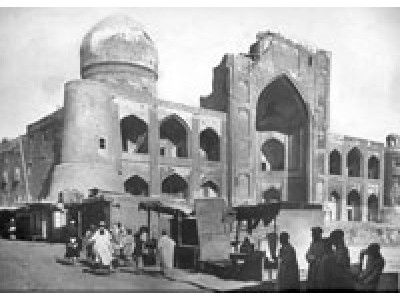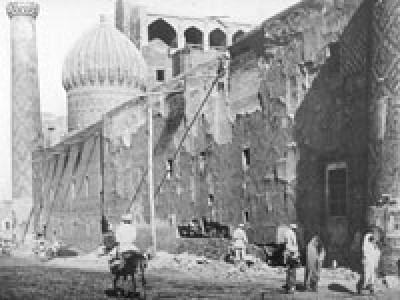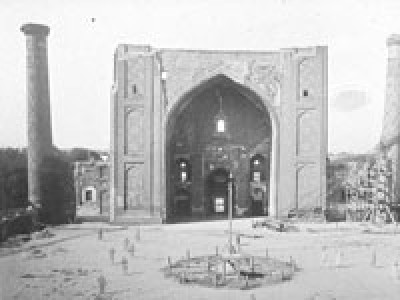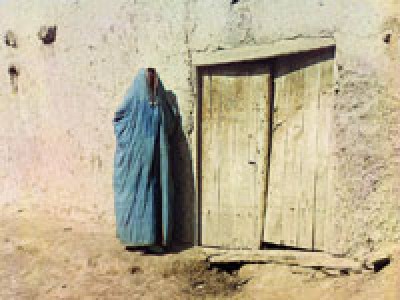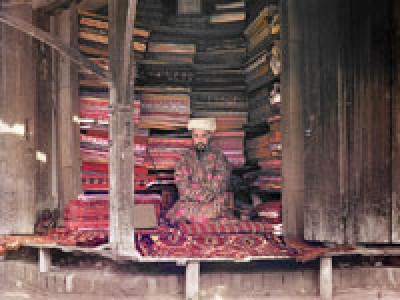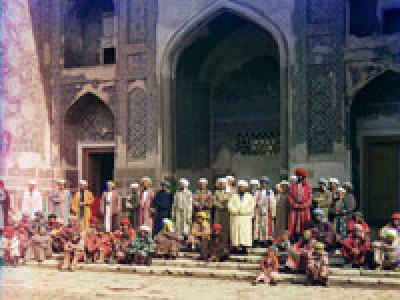
Earliest known traces of human"s life on the territory of contemporary Uzbekistan had been found in the mountain caves and grottos and are attributed to the end of the Early Palaeolithic Age (Ashel epoch). Monuments of Kul-Bulak in the valley of Angren river and the complex of Uch-Tut in Bukhara district are dated from that period.
A new type of human being - the Neanderthal man - appeared in Central Asia at the Palaeolithic Age (about 100 - 40 thousands years BC). At that period the human had settled down almost throughout the territory of contemporary Uzbekistan. The ancient Palaeolithic sites had been found in Surkhan-Darya region, in Kashkadarya, Fergana and Tashkent province. The burial of a Neanderthal boy had been discovered in the Teshiktash grotto - a striking illustration of presence of some religious beliefs at that time.
The Early Palaeolithic Age (40 - 12 thousands years BC) was a period of modern human being formation - the Cro-Magnon man. At that time the natural habitat of man extended, community flat sites appeared and the quantity and diversity of tools incereased. Stone had become a main material for manufacturing of tools. People started occasional making fire by means of friction.
Rock paintings found in Zarautsay (Surkhan-Darya province) were done in red mineral paint (ochre) and are attributed to the Mesolithic Age (13 - 5 thousands years BC).
By the Neolithic Age (5 - 2 thousand BC) the process of tribe formation had completed and as a result first human families appeared. Archaeological excavations at the site of Djanbaz Kala (Bukhara region) have revealed the remains of large oval-shape dwellings and brass articles of that time.
The Bronze Age has seen exuberant growth in agriculture production unseen before. This had become possible due to human"s bringing of irrigation farming into use.
At the Iron Age the iron metallurgy had become widely spread on the territory of the Southern Uzbekistan and the development of irrigated farming continued. All these factors made for the settlements to become economically stronger.
At the middle of the First Millennium BC the process of class hierarchy formation sped up dramatically resulting in the advent of such ancient states as Khorezm, Sogdiana, Baktriana and Margiana. At the turn of our era first ever transcontinental caravan road (The Great Silk Road) was paved on from China to Mediterranean Sea.
From the middle of the 6th century BC Persian kings of Achaemenid dynasty have spread their rule over a number of states of Central Asia. Their dominance lasted till up to the second half of the 4th century BC when Alexander the Great had conquered the territory of modern Uzbekistan.
The demise of the Great Conqueror happened in 323 BC has resulted in numerous revolts as well as disputes among the Alexander"s associates. And eventually on the bigger part of the territory of Central Asia the Seleucid Empire had formed than followed by the Greek-Baktrian Empire (Baktria) and the Parthia.
For the period from the end of the 1-st century BC up to the middle of the 4-th century AD Central Asia was a part of Kushan Empire This period is characterized by growth of numerous cities, strengthening of trade communications and development of crafts. The ruins of multiple monuments dated to that time still can be seen. At the archaeological site of Dalverzin-tepe monuments of Buddhists culture had been found to demonstrate a unique syncretic culture of Kushan-Baktrian times incorporating the elements of local ancient Baktrian as well as Hellenic, Saka-Scythian and Indian cultures.
The first written reference to the ancient state of Konguiy dates back to the Chinese chronicles of 2nd century BC. The main areas of this state were situated along the river of Sirdarya.
At the middle of the 5th century AC a mighty Kingdom of Hephtalites had established its rule over Central Asia. The new type cities such as Samarkand, Bukhara, Chach (Tashkent) and alike had started sprawling around the fortresses of local rulers.

 Centralasia Adventures
+998712544100
Centralasia Adventures
+998712544100




